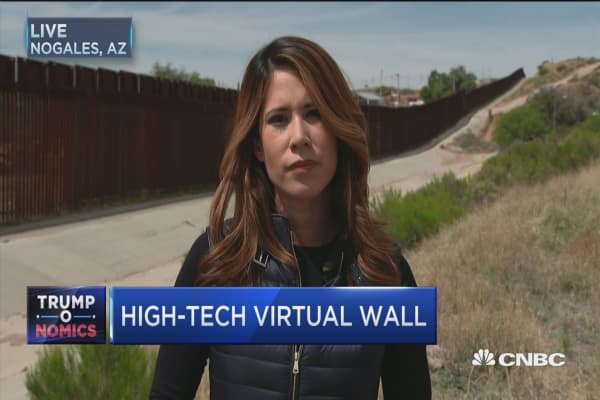Today Attorney General Jeff Sessions is touring the U.S.-Mexico border in Nogales, Arizona where he is speaking with law enforcement and military personnel. Known for his hardline position against illegal immigration — as well as restricting legal immigration — this will be his first trip in office visiting the wall.
Though bidding for companies vying for the chance to build the estimated $15 billion wall has closed, experts still say that technology has and will continue to play an important role in securing the border. The executive order on border security emphasizes urgency to achieve complete operational control of the southern border.
FLIR, a company that specializes in the production of thermal imaging cameras as well as components and imaging sensors already has a presence on the border wall. The company is a supplier into the integrated fixed tower program outfitted with long range thermal cameras.
“DHS has been a long time user of technologies to help detect and identify border incursions. Thermal imaging technology has been recognized as a very powerful tool in that mission in that it operates day or night” outgoing FLIR CEO Andrew Teich said to CNBC in an interview.
While he wouldn’t say how many miles exactly, the range is several miles, giving border control agents the ability to see activity with enough time to react.
The U.S. Customs and Border Patrol officials announced this week that “technology alone would not meet the requirements of the solicitations” in an amended request for proposals. Proposals submitted by the deadline date were required to include physical barriers in addition to technology in their proposals.
“A lot of those questions are really our elected officials,” said Elbit Americas CEO “but, what I can tell you is from our experience, an effective order security technology consists both of technology and physical elements.”
Elbit Americas is contracted by the U.S. custom and border protection to deploy a combination of technology from integrated fixed towers to sensors, radars and cameras.
“The border itself is not homogenous, there are different areas, different topographies, different geographies in some cases closer to urban areas, in some closer to rural areas.” said Horowitz “What you have to do is allow for the flexibility of selecting and integrating the right mixture,” he said.
[“Source-cnbc”]











